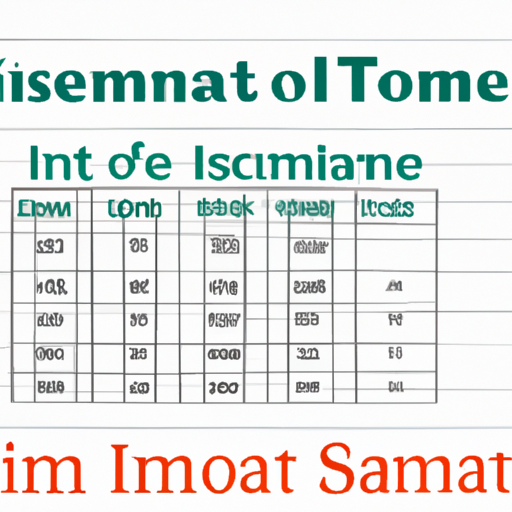How to Calculate an Income Statement: A Step-by-Step Guide
An income statement is a vital tool for businesses to measure their financial performance over a specific period. It provides valuable insights into a company’s revenues, expenses, and profitability, enabling business owners and investors to make informed decisions. In this article, we will walk you through the process of calculating an income statement step by step, ensuring accuracy and clarity in your financial analysis.
1. Determine the Reporting Period
The first step in calculating an income statement is to identify the reporting period for which you want to create the statement. Usually, businesses prepare income statements on a monthly, quarterly, or annual basis. Choosing the right reporting period is essential for a comprehensive financial analysis.
2. Calculate Gross Revenue
Gross revenue, also known as gross sales or total revenue, reflects the total amount of money generated by selling goods or services during the reporting period. To calculate gross revenue, simply add up all sales transactions without deducting any expenses or costs. This figure provides a snapshot of your company’s income from core operations.
3. Calculate Net Revenue
Net revenue is the gross revenue minus any returns, cancellations, allowances, or discounts provided to customers. Subtract these adjustments from the gross revenue to obtain your net sales figure. Net revenue represents the revenue after accounting for any deductions and reflects the actual income generated by the business.
4. Calculate Cost of Goods Sold (COGS)
The Cost of Goods Sold (COGS) refers to the direct costs associated with producing goods or delivering services during the reporting period. COGS typically includes raw materials, labor costs directly related to production, and manufacturing overheads, among others. To calculate COGS:
i) Calculate the beginning inventory value.
ii) Add purchases made during the reporting period.
iii) Subtract the ending inventory value.
5. Calculate Gross Profit
Gross profit is calculated by subtracting COGS from net revenue. The resulting figure represents the money left over after covering production expenses but before deducting operating costs and other expenses. Gross profit is a crucial metric that indicates the profitability of a company’s core operations.
6. List Operating Expenses
Operating expenses include all indirect costs associated with running a business that are not directly tied to producing goods or services. These expenses can include rent, utilities, office supplies, salaries for administrative staff, insurance, and marketing expenses, among others. Make sure to list and categorize all operating expenses clearly, as they have a direct impact on the company’s profitability.
7. Calculate Operating Profit
Operating profit, also known as operating income or operating earnings, is calculated by subtracting operating expenses from gross profit. This figure tells you how much money is left after covering both production and operating costs. Operating profit is a key indicator of the company’s ability to generate profits from its core operations.
8. Add Non-Operating Income and Expenses
Non-operating income and expenses refer to money earned or spent on activities outside a company’s core business operations. Examples include gains or losses from investments or the sale of assets, interest income or expense, among others. Add or subtract non-operating income and expenses as appropriate. These items can significantly impact a company’s overall financial performance.
9. Calculate Income Before Taxes
To calculate income before taxes (also known as pre-tax profit or taxable income), simply add your operating profit to your net non-operating income or subtract the net non-operating expense. This figure represents the money remaining before accounting for taxes and provides an understanding of the company’s profitability before tax obligations.
10. Calculate Income Tax Expense and Net Income
After calculating the income before taxes, multiply this amount by your company’s effective tax rate to determine the income tax expense. Finally, subtract the tax expense from the income before taxes to arrive at the net income figure. Net income represents the final profit amount that the company earns after accounting for all expenses and taxes.
In conclusion, calculating an income statement requires gathering accurate financial data and carefully accounting for all relevant revenues, expenses, and other financial transactions that occurred during the reporting period. By following this step-by-step guide, you’ll be well on your way to generating a comprehensive and informative income statement for your business. Use this valuable financial tool to gain insights into your company’s financial health and make informed decisions to drive growth and profitability.






0 Comments